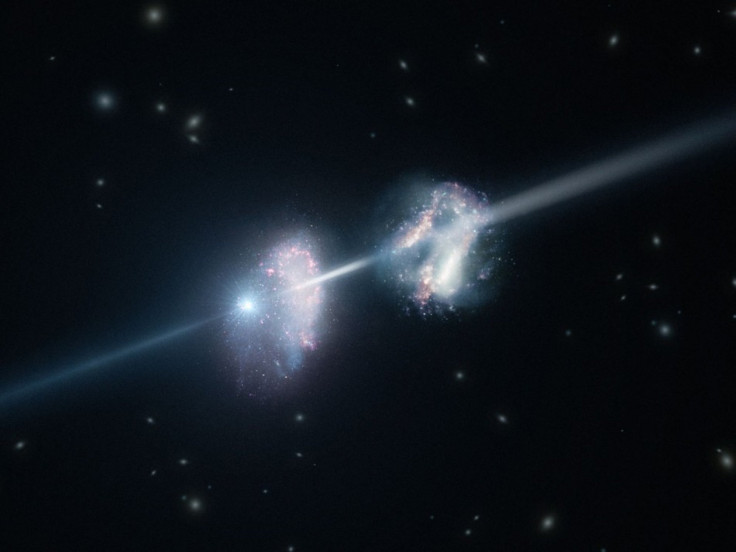Early Universe Heavier than Expected, Study

The early universe may prove to be heavier and mature than scientists expected, a study showed.
Astronomers observed a never-seen-before burst of radiation 12 billion light years away. The radition blasted through the universe and bumped into galaxies, showing that they contained heavier and therefore potentially more developed elements than expected, an international team reported Wednesday.
Astronomers oberved an energy burst - consisting of gamma rays - at the Very Large Telescope array in Chile.
When we studied the light from this gamma-ray burst we didn't know what we might find, said Sandra Savaglio, an astronomer at Max Planck Institute for Extraterrestrial Physics. Savaglio headed the study published Wednesday in the Monthly Notices of the Royal Astronomical Society. It was a surprise that the cool gas in these two galaxies in the early universe proved to have such an unexpected chemical makeup, she said.
Savaglio observed the early universe's chemical fingerprint by analyzing the light emitted by the gamma-ray burst called GRB 090323 . The light passed through early galaxies, which acted as a filter, she said.
The massive cloud of energy revealed surprising information about the early makeup of the universe - fewer than 2 billion years after the Big Bang that created the universe.
According to expectations, the galaxies in the very early universe should not have yet been able to create so many heavy elements, so we were very surprised to discover that these galaxies had a higher content of heavy elements than our own sun, Thomas Krüehler, a student at Planck Institute for Extraterrestrial Physics, said.
By observing the intense gamma rays that passed through galaxies, astronomers inferred that galaxies produced stars at a much faster rate than expected.
We were lucky to observe GRB 090323 (the energy burst) when it was still sufficiently bright, so that it was possible to obtain spectacularly detailed observations with the (Very Large Telescope), Savaglio said in a statement. Gamma-ray bursts only stay bright for a very short time, and getting good quality data is hard. We hope to observe these galaxies again in the future when we have much more sensitive instruments.
The Very Large Telescope is operated by the European Southern Observatory and lies in Chile's Atacama Desert west of the Andes Mountains.
© Copyright IBTimes 2025. All rights reserved.





















